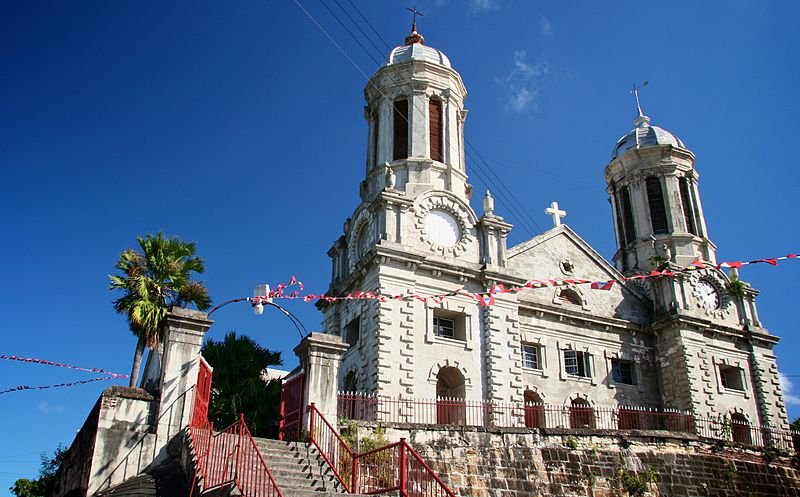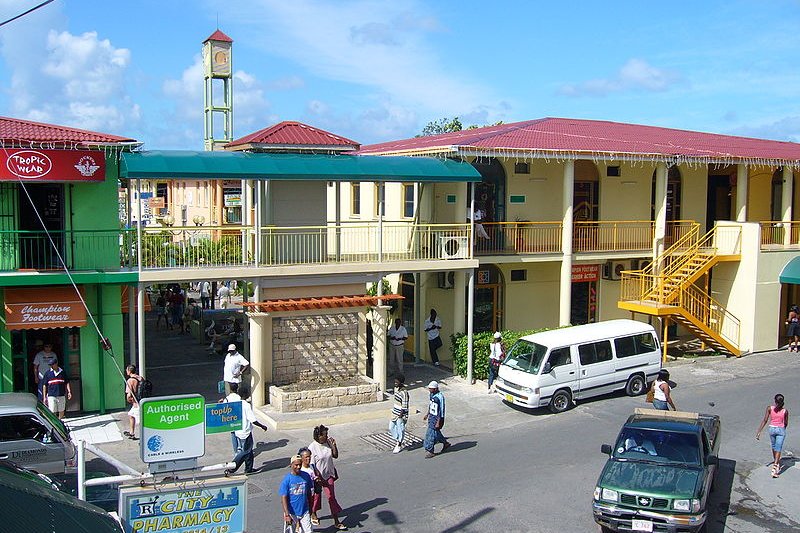
St John's, Antigua & Barbuda
 Go Back - HOME | Latest Antigua and Barbuda > Americas > World | YouTube : Facebook | About Me : Contact Me
Go Back - HOME | Latest Antigua and Barbuda > Americas > World | YouTube : Facebook | About Me : Contact Me St John's Cathedral, St John's, Antigua
St John's Cathedral, St John's, AntiguaSource: https://en.wikipedia.org/wiki/File:Exploring_st-_john%27s_antigua_-_5.jpg
Author: D'Arcy Norman

St John's is the capital and largest city in Antigua and Barbuda. Located on the island of Antigua, it is also the chief port and commercial center of the island nation. St John's cover just about 10 sq km (4 sq mi) and has a population of 35,000 people (2011 estimate).
The city of St John's traces its history to the initial European colonization of Antigua and Barbuda in 1632. In the 20th century, the city began to carve an image as an investment banking center and exclusive resort destination. This attracted affluent visitor that help to support its economy.
Today St John's is a charming city with a well-preserved core, with a mix of historic buildings as well as new, upscale shops, restaurants and boutiques.
 Heritage Quay, St John's
Heritage Quay, St John'sSource: https://commons.wikimedia.org/wiki/File:Heritagequayantigua.jpg
Author: UKWiki

Visiting St John's
Many visitors arrive by cruise ship, docking at the Heritage Quay, or you can also fly to St John's, arriving at the V.C. Bird International Airport (ANU), which receives flights from Anguilla, Barbados, Dominica, Grenada, Kingston, London-Gatwick, Miami, Newark, Port of Spain, Saint Croiz, Saint Kitts, Saint Vincent, San Lucia, San Juan, Sint Maarten and Toronto, among others.Places of Interest in St John's
- Antigua Recreation Ground
The national stadium of Antigua and Barbuda. - Fort James
Primary fortification of St John's, built in the early 18th century. - Museum of Antigua and Barbuda
Occupying the old Courthouse of Antigua and Barbuda built in 1747, this museum has exhibits of Arawak and colonial artifacts, and includes a life-size replica of an Arawak abode. - Sir Vivian Richards Stadium
A multi-purpose stadium in North Sound, St John's, a popular venue for cricket matches. - St John's Anglican Cathedral
The main church building in the city of St John's. This is the third incarnation of the church, having been destroyed by earthquakes in 1683 and 1745, and was rebuilt in 1845 to its present state.
 Latest updates on Penang Travel Tips
Latest updates on Penang Travel Tips

Copyright © 2003-2025 Timothy Tye. All Rights Reserved.